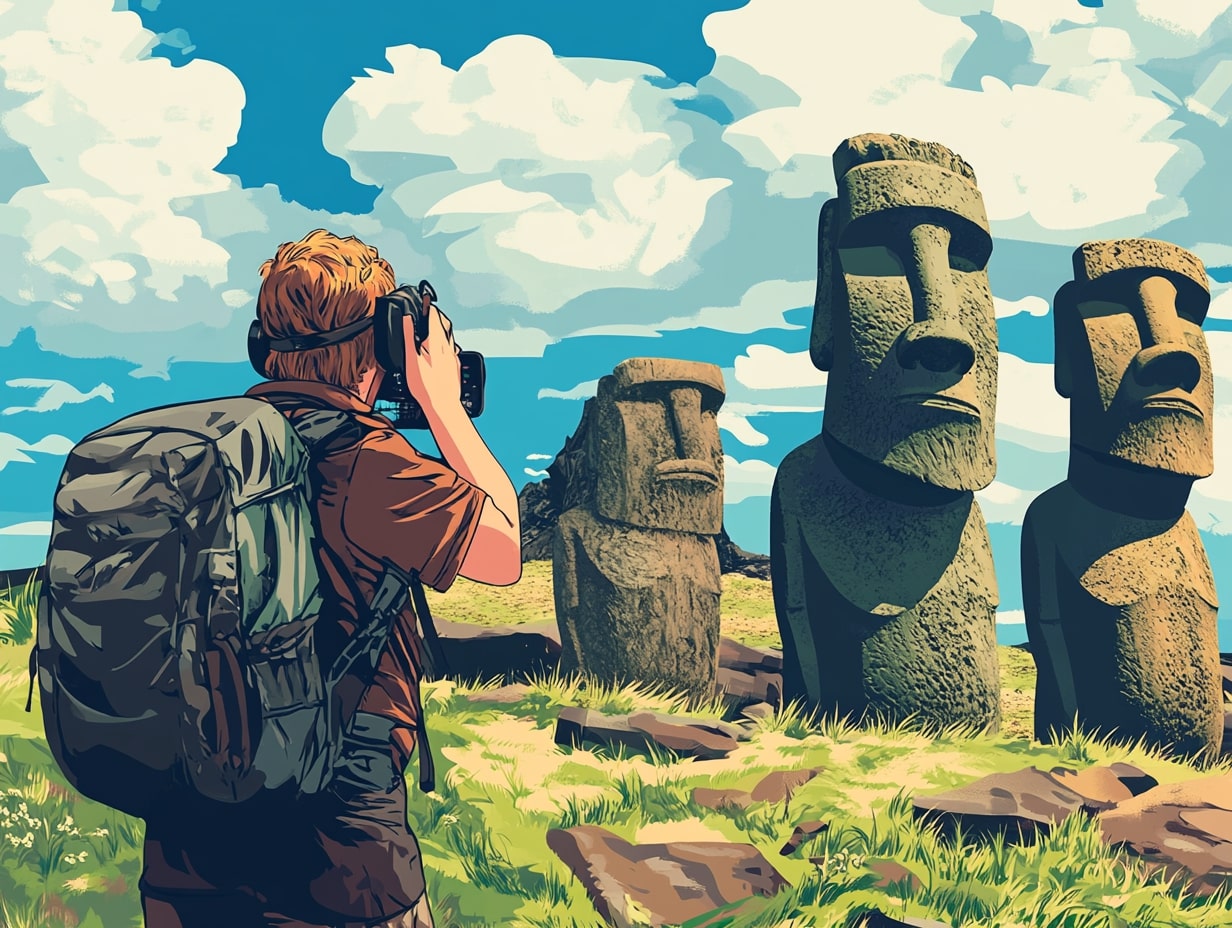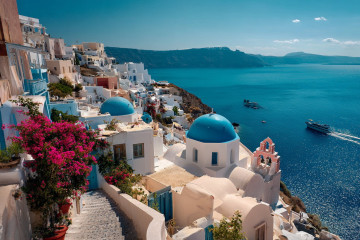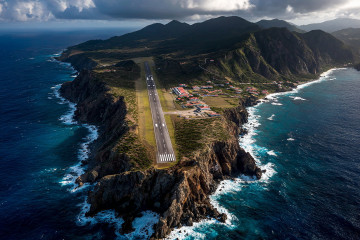Everything you need to know about traveling to Rapa Nui, Chile.
Located more than 2,000 miles west of South America in the middle of the Pacific Ocean, Rapa Nui, also known as Easter Island, is one of Earth’s most remote inhabited places. It marks the southeast corner of the Polynesian triangle, with Hawaii to the north and New Zealand to the southwest.
The island covers 63 square miles of land, nearly half of which is in Rapa Nui National Park, and it’s home to approximately 900 mesmerizing moai statues, often called the “Easter Island heads.” The giant, monolithic carvings are scattered around the island, some standing proudly against the backdrop of the Pacific, while others are buried up to their necks in soil.
Though the statues are an obvious draw, there are other reasons to travel to Easter Island. The remote island offers a calm atmosphere, and though typical amenities like air conditioning and Wi-Fi are lacking, the wild horses roaming the hills and dinners spent gazing out over the ocean make up for it.
“There’s a point on Rapa Nui, it’s the tallest mountain that you can go to the very top, and you can look 360 degrees and just see the ocean,” Sergio Mata’u Rapu, a documentary filmmaker, told Travel + Leisure in our podcast Lost Cultures about what makes it such a special place to visit. “It’s at that point that you can see sort of the limits of your island, right? You can see the limits of your world, your solid world.”
It’s long been thought that the first people to come to Rapa Nui arrived between 300 and 400 C.E. But recent studies are questioning this line of thought, suggesting instead that people didn’t come until several hundred years later. It’s believed that, as resources began to dwindle on the island, starvation and warfare nearly caused the population to go extinct.
On Easter Sunday in 1772, Dutch explorers landed on the island and dubbed it Paaseiland, meaning Easter Island. The next hundred years were not kind to the people of Rapa Nui: It’s thought that soon after, there was a civil war, then a slave raid, and then an outbreak of smallpox.
In the 19th century, Chile annexed Rapa Nui (or Isla de Pascua as it’s known to Chileans), and in 1965, the people of Rapa Nui became Chilean citizens. Today, many mainland Chileans live on the island as well, with Rapa Nui (the name of the Indigenous people as well as the island) making up only about half of the approximately 8,500-person population.
Ready to visit? Here’s everything you need to plan an epic adventure to Easter Island.
Best Hotels & Resorts
Hare Uta Hotel
Hare Uta Hotel is a few minutes’ walk from the center of Rapa Nui’s main town, Hanga Roa, and it overlooks the water. Friendly staff members go out of their way to make guests feel at home, and the poolside spa offers traditional treatments featuring local banana leaves and volcanic soil. The restaurant is also a favorite, both for guests and for those staying elsewhere.
Altiplanico Easter Island
Another favorite for visitors is Altiplanico Easter Island. The bungalows here are about a 30-minute walk from central Hanga Roa, but the coastal views along the way — and welcome drinks upon arrival — make up for any inconvenience. Rooms are bright and airy, with open-air showers and private terraces.
Nayara Hangaroa
Located near the center of town, Nayara Hanagroa provides another option for visitors. The hotel offers individual thatched-roof huts sprinkled across 17 private acres overlooking the ocean. Take part in the hotel’s cultural programming, or book an adventure to explore more of Rapa Nui via hiking, biking, or even diving into its crystalline waters.
Best Things to Do
Explore the island’s history.
An excellent place to start your trip is the Rapa Nui Museum. It’s the only museum on the island, and, though small, it boasts an impressive collection, including ancient fishing hooks, a white coral moai eye, and mata (obsidian stone tools). In addition to housing artifacts, it walks visitors through the history of the island and of the museum’s collection. Visits are free, although donations are accepted. Opening hours can vary, so check before arrival.
See the moai.
The most recognized features of Rapa Nui are the moai — those giant stone shrines that punctuate the island. But the carvings aren’t just heads. Because some of the most widely photographed figures are those buried up to their necks, many people don’t know the moai are monolithic, full-body carvings. The statues, some of which stand up to 32 feet in height, were carved to honor important people after their deaths. Moai were carved using a toki (a chisel made of rock). The best-quality toki were made from a very hard stone known as hawaiite, only found in the Rua Toki-Toki quarry. One of the biggest enigmas of Easter Island is how people in ancient Rapa Nui were able to move the gigantic stone statues from their carving site to the places they would eventually stand.
Rapa Nui National Park, which covers nearly half the island, is the best place to see the imposing carvings. UNESCO lists the park as a World Heritage Site, describing its contents as “one of the most remarkable cultural phenomena in the world.”
The best way to learn about the moai is touring the national park with a knowledgeable local guide. Independently, a 10-day ticket to access the park costs around $80.
Though you can see moai all over the park, there are a few must-sees for any visitor. Ahu Tongariki, an ancient stone platform on the southeast shore, is home to 15 moai standing shoulder-to-shoulder and silhouetted against the sky. A short ways inland from there, Rano Raraku is an impressive volcano where hundreds more moai, in various stages of carving, still stand. It’s also a great spot to hike, as it offers stunning views of the island. Finally, though much of the coastline is rocky, the north coast of the island is home to Playa de Anakena, a beautiful, white-sand beach with turquoise water.
Meet the local wildlife.
Another great spot for adults and children to enjoy their vacation is in town — especially since the Hanga Roa harbor is a perfect place to see sea turtles. If you stop by while fishermen are hauling in their catch and cleaning the fish, you can spot the turtles floating just beneath the surface, waiting to snack.
Best Restaurants
There are plenty of places to dine on the island, and most restaurants are in town. Be prepared for slow service, and plan accordingly if you are eating before joining a timed tour.
La Kaleta
La Kaleta, which sits right on the coast and has a great view, is a visitor favorite. The menu is written on a chalkboard outside and changes daily, so pop by to see if what’s on offer interests your tastebuds.
Te Moana
Te Moana also offers beautiful ocean views. Portion sizes are slightly larger than many other restaurants in town, and prices are more expensive. The restaurant specializes in fresh seafood dishes, including oysters and ceviche, making it a great spot for a more upscale night.
Neptune’s Island Restaurant
Another favorite for visitors is Neptune’s Island Restaurant (also known as Neptuno Sunset). Guests can dine on the veranda or inside the restaurant and enjoy views of the Pacific from either spot. The staff here is friendly, and prices are modest.
Best Time to Visit
The best time to visit Easter Island is during its summer season, between December and March. During this warm, humid season, the temperatures typically hover just below 80 degrees Fahrenheit. Winter, however, is similarly mild, with temperatures rarely dipping below the mid-60s. Because the island is located in the middle of the Pacific, visitors will find there’s often a cool ocean breeze in addition to the fairly consistent year-round temperatures.
In short, there’s no bad time of year to visit Easter Island — though, if you want to stay dry, avoid traveling in April when the island gets most of its rainfall. The driest months are between October and February.
In addition to the great weather, there’s another reason to travel to Easter Island in February: Tapati Rapa Nui. The island’s namesake festival began in the 1970s to celebrate culture and heritage, and it’s held each year at the beginning of February. Over the course of the two-week celebration, there are several competitions, including dancing, canoeing, and horse racing, plus a chance to try Haka Pei — a sport where people use a banana leaf to sled down Rapa Nui’s steepest hillside.
How to Get There
By air: Though getting to Easter Island isn’t hard, per se, it is a long journey. After all, it’s one of the world’s most remote inhabited islands. The only airline that flies here is the Chilean carrier LATAM, which means travelers must fly through Santiago, Chile.
It takes around 10 and a half hours to reach Santiago from New York or Los Angeles and nine hours from Atlanta. The flight from Santiago to Hanga Roa — the capital of Easter Island — takes about five and a half hours and runs about a dozen times a week. U.S. passport holders don’t need a visa as long as they plan to stay for less than 90 days.
By boat: Another way to get to Easter Island is by cruise. Several cruise lines, such as Seabourn and Silversea, offer sailings that include Rapa Nui, but these trips will cost you a pretty penny.
How to Get Around
Taxi: Getting around on Easter Island can require some pre-planning since very little of the island has cell phone reception. While taxis often drive around looking for passengers, it’s a good idea to pre-book your transportation before setting out on your daily adventure. The same applies to pick-ups from the airport, which can help you avoid scams.
Rental cars: Rental cars are also available on the island, but few companies offer insurance, and the roads can be rough.
Tour: One of the best ways to see the island — for both convenience and an insider perspective — is to book a tour. There are many options for both private and group tours (the latter being more environmentally friendly), lasting anywhere from a few hours to a few days.
By foot or by hoof: If you’re up for an adventure (and a workout), you can also travel by bike, foot, or horseback. Some places aren’t accessible by car, so going by horse or on foot can allow you to reach some of the island’s hidden treasures.



